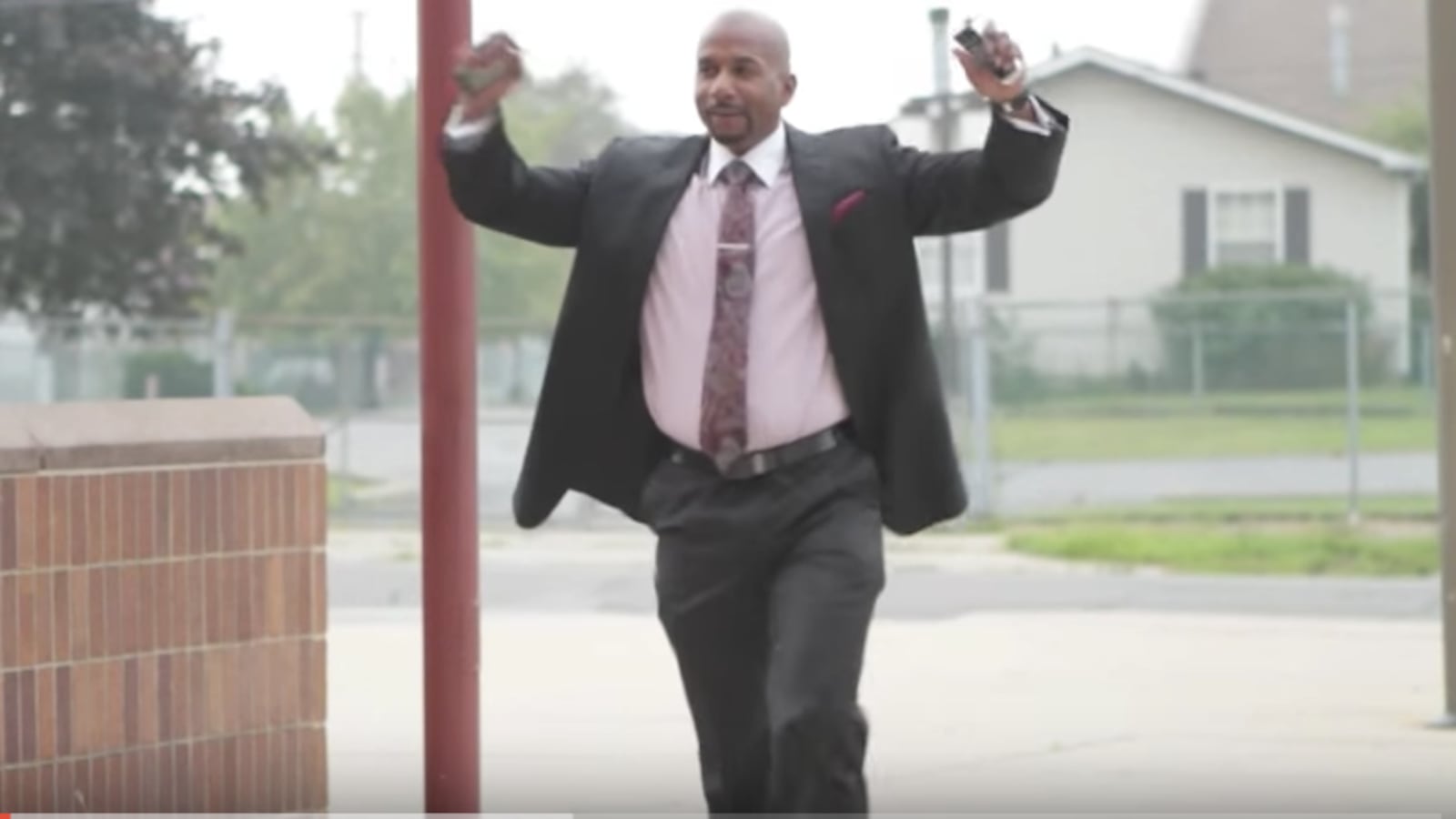The second of two candidates to interview for schools chief in Detroit offers a stark alternative to the first.
Derrick Coleman, superintendent of Michigan’s River Rouge School District, will face a battery of interviews Monday. Where Nikolai Vitti, the Florida schools chief who interviewed last week, runs a district far larger than Detroit’s, Coleman’s district has fewer students than Cass Technical High School. Vitti has a connection to the Detroit area, but Coleman graduated from and worked in Detroit Public Schools. And Coleman’s district has struggled to boost student performance while Vitti’s has won national acclaim for improving the test scores of some students.
Coleman will spend 12 hours interviewing in Detroit on Tuesday starting at 8 a.m. with a briefing on district finances and academics. His planned schedule for the day includes visits to Cody High School and Davison Elementary-Middle School to meet with students and educators, a lunch with school board members at Golightly Career and Technical Center, and a series of public forums at Renaissance High School. That includes a 2:30 p.m. meeting with religious, labor and business leaders, a 4 p.m. meeting with parents and community leaders, and a 6 p.m. public interview with the school board.
Before all of that begins, here are 10 things to know about Coleman:
- Coleman graduated from and earned a master’s degree at Eastern Michigan University. He is currently pursuing a doctorate in education at Gwynedd Mercy University in Pennsylvania, where he says he’ll graduate in August.
- He has deep connections with Detroit’s main school district. He attended DPS schools for kindergarten through 12th grade, graduating from Western High School, today known as Western International High School. His first teaching job was at Western, and he taught in DPS from 1997 to 1999 before moving into administrative positions, including stints in Pontiac (where he was principal of Pontiac Central High, which is now closed) and Ypsilanti (where he was principal of Lincoln High School). “I’m uniquely qualified in that I’m a product of the system,” he told the Detroit Free Press. To the Detroit News, he said, “I … represent the promise that Detroit children can hope to become. I understand the city and the needs of the people.”
- Coleman returned to DPS from Ypsilanti in 2008 to become an assistant superintendent overseeing 29 schools. One of them was Durfee Elementary, where the city’s auditor general in 2009 found “control weaknesses related to compliance with District cash management policy.” In a “management response” to the audit, Coleman said the principal of the school retired and the new principal would be briefed on the auditor’s recommendations.
- Coleman tried — but did not succeed — to become a big-city superintendent before. In 2009, he was one of seven finalists to lead Ypsilanti Public Schools. But the school board wasn’t impressed. “I thought it was a weak list of individuals — I have serious questions about every single applicant,” one board member told the Ypsilanti Citizen.
- Since May 2012, Coleman has been the superintendent of River Rouge School District. Last year the district, which has only four schools, enrolled only 1,750 students. (The Detroit district, on the other hand, has nearly 100 schools and 40,000 students.)
- River Rouge is on a short list of districts in Michigan with student performance as low as Detroit’s. Only 4.3 percent of students in grades 3-8 met the state’s standards for proficiency in reading and math last year, compared to 4.1 percent in Detroit’s main district, and all of its schools are in the bottom 10 percent statewide. The average SAT and ACT score in River Rouge is lower than in Detroit and under Coleman’s leadership, River Rouge’s four-year graduation rate declined slightly last year, from 76.5 percent to 75 percent.
- River Rouge has gained students under Coleman’s tenure — at Detroit’s expense. According to state data, 43 percent of school-aged students living in River Rouge do not attend district schools. (Many of the students who opt out are white: While River Rouge is nearly 40 percent white according to 2010 Census data, white students make up only 7 percent of enrollment.) Coleman’s contract promised bonuses if he boosted enrollment from 1,147, and he delivered, bringing enrollment to 1,750 last year. On his resume, he explains that he saved the district from insolvency through an “aggressive local and regional marketing and student recruitment campaign that eliminated a $3.4 million dollar deficit 2 years upon arrival and 1 year ahead of schedule.” The campaign, which included ads on Detroit buses, is one reason that a third of River Rouge’s students last year — nearly 600 — actually live in Detroit.

- The enrollment boost helped River Rouge stave off closure. But some in the district say Coleman has not sufficiently acknowledged the contributions of others in making the district solvent. In January 2011, over a year before Coleman came on, the district’s teachers agreed to a three-year, 15 percent salary cut and limits on health care coverage. “He did end up strengthening the district. We were teetering on closing,” David Kocbus, who headed the River Rouge Education Association until 2014, told the Free Press. “But who was really responsible? It was the teachers.”.
- In the fall of 2015 River Rouge, under Coleman’s leadership, opened a new primary school focused on science, technology, engineering, and math, the subjects that together are known as STEM. The new option — the district’s fourth school — for the first time meant that families could exercise school choice while staying in the district. It also aimed to appeal to prospective families.
- In November 2015 Coleman added a school-based health center in River Rouge, in a move that prompted the United Way to designate the district as one of its “centers of excellence.” Society places unrealistic expectations on poor students to act “normal” even when they don’t have access to “normal” necessities like breakfast and a good night’s rest, Coleman said in a speech announcing the new center.

